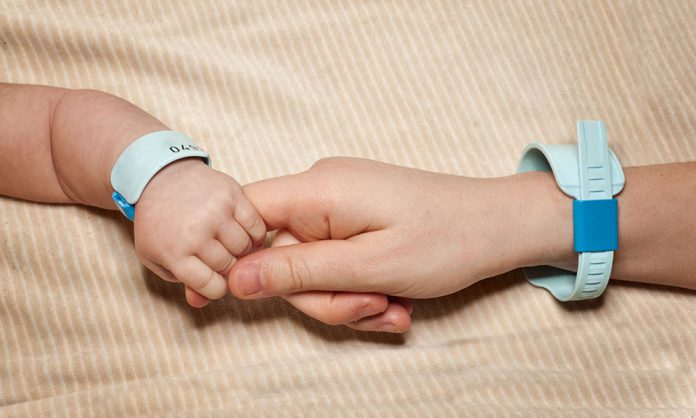By: Paula Cabrera
Before giving birth, I prepared as much as I could. I had a checklist for our hospital bags. I had a checklist for the things my baby would need for her first month of life. I had a checklist of all the documents we’d need. I had a checklist of all the cases I needed to turn over to other lawyers in the firm. You name it, I had it.
But I didn’t prepare for giving birth at 34 weeks, with a low platelet count to a baby with low platelet count as well. I didn’t prepare for my baby’s stay in the NICU for nine days.
Then again, God has his reasons and all the love and support our mini family was showered with helped us through those challenging days. After nine days, we got to bring our lovely little baby home, and I thought not getting enough sleep was the difficult part. As for my platelet count, I was given corticosteroids (Prednisone) for one week so that it would continue to normalize.
Two months and two weeks after, when we were sort of getting the hang of parenting, breastfeeding, burping, diaper changing, etc., I noticed that my legs were covered with tiny red dots. I showed my sister-in-law, who’s a doctor, and she advised me to get a blood test. Without any sense of urgency, I put it off the next day.
When I got my blood test results, I thought the laboratory made a mistake. My platelet count was at 2,000 when the normal level is from 140,000 to 450,000. The laboratory said there was no mistake; they had even checked twice. My husband called my sister-in-law, and she advised him to bring me straight to the emergency room. The attending ER doctor put me in the quarantine room in the ER and after initial check-up, he said it was a miracle that I had no internal bleeding given my very very low platelet count.
And so my journey as an ITP warrior began.
I was diagnosed in July 2015 with Ideopathic Thrombocytopenic Purpura (ITP). I’m not a doctor so I will explain it in the simplest way I have learned to understand my condition. It’s an autoimmune disorder – my antibodies mistake my platelets as foreign objects and so they attack them. Platelets are in charge of making blood clot, and with low platelets, it would be difficult for a tiny wound to stop bleeding, you’re bound to bruise easily, and there would be tiny red dots (purpura), usually on the legs. Thus, there’s a risk of internal bleeding. The cause is unknown, but my hematologist told me that any major stress may cause or trigger it – and giving birth is a major stress on the body. While he never really concluded that it was my pregnancy that caused or triggered the blood disorder, there was no denying that the nearest event was my giving birth to my baby.
I was placed on different dosages of Predinisone (which has the side effect of boosting platelet count) as my platelet count would jump to 78,000 then would fall to 19,000. I was advised by my doctor not to take trips first until my platelet count stabilizes. He also advised me not to go to work and to rest at home and use my energy caring for my baby and myself.
The whole family (my side and my in-laws) pretty much panicked because ITP was such a strange condition and no one could fully understand what was happening to me. I did my own research because I wanted to know what my body was dealing with. I read up as much as I could and I carefully followed my doctor’s advice and instructions. I watched what I ate, sticking to healthy home-cooked meals, especially ampalaya, liver, and camote tops – as many suggested they’re good for the blood. I did my blood tests and went to my check-ups weekly. But still, my platelet count wouldn’t go back to the normal level, and it stayed at around 35,000 to 75,000.
I had to talk to my bosses and I asked to go on an indefinite leave. They were so understanding of my situation that they insisted I don’t think about work and focus on getting better.
At the start of my indefinite leave, (well, actually, from the time I gave birth) I directed all my energy to taking care of our baby. I wanted her to gain weight so I patiently and determinedly breastfed her despite all the struggles (clogged ducts, Prednisone affecting my milk supply, sore breasts, etc.). I made sure I brought her to all her check-ups and she was cared for 24/7. I didn’t want to admit I was tired (and that’s one thing about ITP: you’re easily tired). I couldn’t even remember getting a good night’s sleep. Now it’s clear to me that my indefinite leave began with me treating it as more time to be with my baby – instead of me getting better.
During one of my check-ups with my hematologist, he told me that the medicine (Revolade or eltrombopag) made specifically to address ITP was finally available in the Philippines. He didn’t want me to stay longer on Prednisone, as the effects of latter were already very apparent. I was so bloated that I couldn’t even recognize myself when I’d look in the mirror; hence, I hated mirrors. I didn’t want to go see my friends or have them visit me because I felt so disgusted with my physical appearance. I was always tired, hungry, and crying, and I knew I was giving my husband a difficult time too. I felt worse than when I was going through the usual baby blues after giving birth.
When my doctor told me about the new medicine, I got excited. Finally, I was going to get better! So when I was told that it was incompatible with breastfeeding and that the medicine was very expensive (almost PhP 900.00 per 25mg tablet, which I would have to take once a day), I was back at square one. My little one was just three months old, and I didn’t want to stop breastfeeding her. I told my doctor my concerns, and he agreed to let my baby reach six months first, and then I would go on Revolade.
And so I continued taking Prednisone, but now with a different perspective on my condition. This time I was determined to get better because I finally understood that I need to take care of myself so I can take care of my family.
I continued breastfeeding, but I also had to slowly introduce formula milk to my baby. I pumped and diligently stored breastmilk so that I could build a stock for my daughter.
Eventually, it was time to go on Revolade – which meant it was time for me to stop breastfeeding. I clearly remember the last time I breastfed my baby. She was still probably full from her last feeding, but I got her, held her closely, and told her that if she wanted more milk, I could directly feed her again. She latched, and for the next thirty minutes or so, I breastfed her for the last time. I cried right after because I knew I would always miss the bond, the closeness, and the magic that breastfeeding brought about. I had to let breastfeeding go because I needed to embrace the reality that I needed to get better so my daughter would have a strong, healthy mother and my husband could have his energetic, fun-loving, and positive wife back.
In less than two months, my platelet count jumped up to a very safe level – 100,000. In a year of taking Revolade, my platelet count stabilized at around 140,000-150,000. I stopped taking Revolade in December 2016 (after one year and two months of being on it), and thank God, my platelet count continues to stay at around that level.
It doesn’t necessarily mean that I won’t have to worry about ITP again. I have it, but I have learned to live with it and manage my condition. I have learned to become very observant of my body, wary of every bruise, red dot, or rash. I still do my blood tests monthly for monitoring purposes, and I go immediately to get it done when I feel like any flu-like symptoms or when I feel extraordinarily tired. The point is I’m an ITP warrior – one in the 9.5 cases for every 100,000 people diagnosed with the blood disorder, and I continue to battle with it and even embrace it as a part of the woman, wife, and mother I am.
I am forever grateful for my husband, my parents, in-laws, and our whole family who consistently remind me that I’m not alone in this battle. I am forever grateful for my lovely little Ceecee, who empowered me discover the strength I never thought I had. I love being your mom, and I promise to keep taking good care of myself so I can keep taking good care of our family.
September is ITP Awareness Month, and I continue to hope and pray with all the ITP warriors that one day, there will be a cure or at least a more accessible and less expensive way of treating and addressing ITP.
For updates on our content, LIKE MomCenter Philippines on Facebook and FOLLOW @momcenter.ph on Instagram.
Paula Cabrera is a working mom and a devoted wife. She and her husband are both lawyers who are continuously learning to embrace the joys and pains of both work and parenting. Reading and writing have always been some of her hobbies, and so, despite being busy, she finds time to do both even for just a few minutes everyday. She hopes to be able to be able to reach out to other parents through her short pieces and remind them that they are not alone in the crazy yet fulfilling world of parenting.





